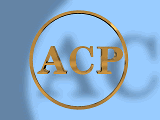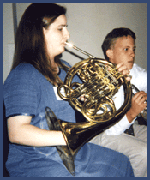American Catholic Press
16565 S. State Street, South Holland, Illinois 60473
|
||||||||||||||||||||||||
|
|
||||||||||||||||||||||||
|
by Rembert G. Weakland, O.S.B, Archbishop
of Milwaukee Some success was registered in all three categories, mostly in the obedient church of North America. Pieces, such as Wagner's Bridal Chorus, were not permitted, not because they were inferior music, but because, by the law of association, they brought the listener into a world totally alien from liturgy. (Unfortunately there are renewed efforts today to reinstate this music or that of the Broadway musical, ignoring this valid law of bad associations.) Gregorian Chant flourished in monasteries and seminaries, and some few modest chants, not always the best, made their way into the parishes. Sixteenth century polyphony was beyond the reach of most parish choirs. The newly composed Masses that were the standard repertoire in parishes across the nation were ably crafted by contemporary church composers and, although seldom inspired, they were always "respectable." These composers did their best to provide adequate music for the Sunday "High" Mass, with a few rousing Latin anthems for festive occasions. None of that music will last in history (it has already totally disappeared from use), but it should not be judged too harshly. It fit the need of the moment; at worst it was inoffensive. If only one could close at this point the story of church music
before the Council! Unfortunately the distinction between "High" and "Low
Mass," based as it was on the singing of a few designated texts,
resulted in a peculiar phenomenon of badly performed and perfunctory
weekday "High" Masses. An organist responded to the priest
and fulfilled the requirements needed to make the Mass "High." It
would be better to pass over in silence the musical quality of these
daily performances. Thank God they have disappeared! There existed also a body of musical hymns used at benediction and other devotions, some in Latin, some in English. The majority of them, written in the last century, were singable and tuneful, but often of dubious quality. The worst of them were the target of the reformers after Pius X because of their maudlin sentimentality. But people loved them and they never totally disappeared. How many today recall the battles over the St. Basil's Hymnal? There existed also a body of hymns in other languages sung in ethnic churches; they were of good quality and already in the "vernacular." Unfortunately, at the moment of change, when they would have been most needed, they were dying out. That this body of hymns, especially those in the Slavic tongues, did not become one of the prime sources for our renewed vernacular liturgy is to be deeply regretted.
|
|||||||||||||||||||||||
|
||||||||||||||||||||||||

